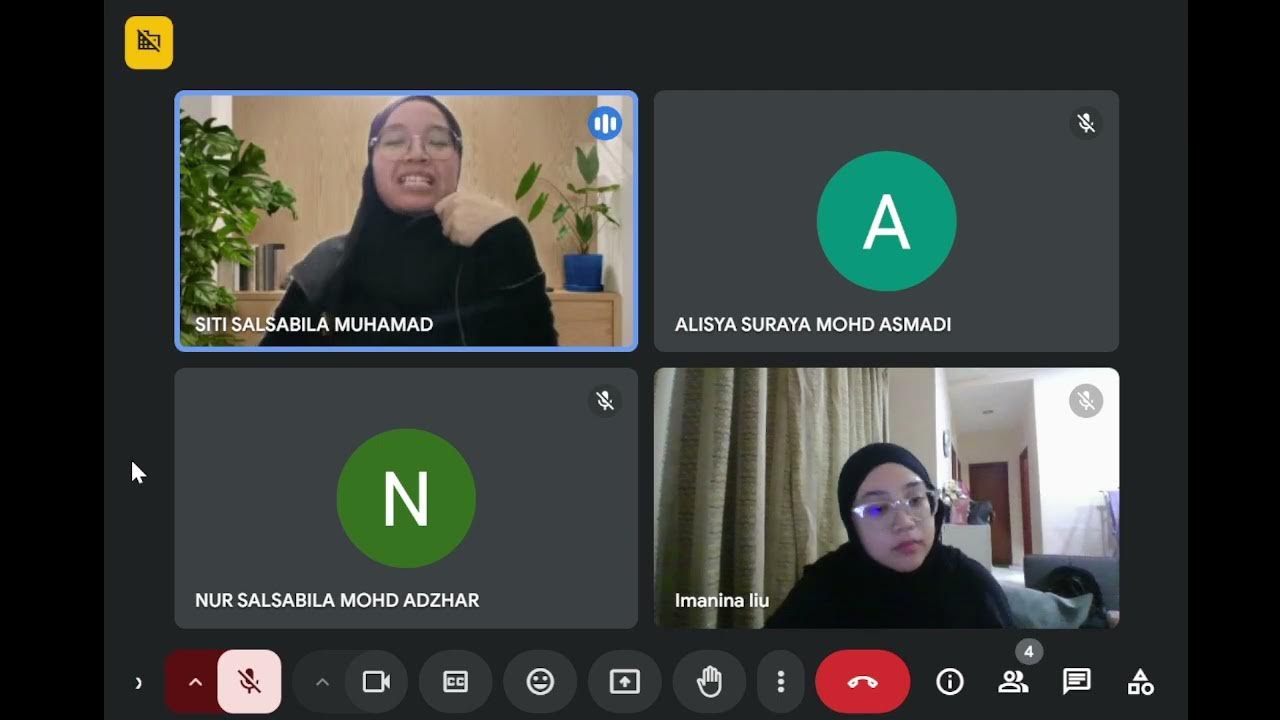Communication Games - Drawing *22
Summary
TLDRIn this team exercise, participants work in pairs to practice communication and collaboration by recreating abstract and specific drawings through verbal instructions alone. Each pair starts by drawing simple shapes, with one person describing the drawing and the other trying to replicate it. As the exercise progresses, participants tackle more complex objects while improving their ability to communicate clearly. After multiple rounds, the team reflects on their experiences, discussing what communication strategies worked best, the challenges faced, and the differences between abstract and specific drawings. The exercise helps enhance teamwork and verbal communication skills.
Takeaways
- 😀 Pairs are formed, with individuals choosing someone they don’t know well yet to promote new connections.
- 😀 The exercise involves participants sitting back-to-back and using verbal instructions to recreate drawings.
- 😀 The first phase focuses on abstract drawings using simple shapes, encouraging clear verbal communication.
- 😀 In the second phase, participants describe more complex objects using figurative language without naming the object directly.
- 😀 After completing each drawing, participants compare their work and provide feedback on communication differences.
- 😀 Roles are switched after each phase, allowing participants to experience both describing and listening.
- 😀 New pairs are formed after a few rounds, giving participants the opportunity to work with different people each time.
- 😀 The exercise encourages participants to reflect on the effectiveness of their communication styles in a group discussion.
- 😀 The facilitator guides the debriefing, prompting participants to evaluate what worked and what didn’t in the communication process.
- 😀 Participants explore whether abstract or specific drawings are more challenging to communicate and recreate.
- 😀 Variations of the exercise can be introduced, such as using more complex drawings or encouraging different descriptive approaches.
Q & A
What is the main goal of the exercise described in the script?
-The main goal of the exercise is to improve communication and cooperation among team members by having them describe and recreate abstract drawings based solely on verbal instructions.
How are the participants organized at the start of the exercise?
-The participants form a circle at equal distances from each other. They are then instructed to pair up with someone they don't know very well yet.
What are the first instructions given to each pair in the exercise?
-Each pair is given two chairs, which they place back-to-back to sit on. They also receive a piece of paper and a pen for the exercise.
What role does Person B play in the initial drawing phase?
-Person B is responsible for making an abstract drawing using simple shapes. They then describe this drawing to Person A, who must recreate it based on verbal instructions.
What types of shapes and objects are included in the drawing exercise?
-The initial instructions involve simple shapes such as triangles, circles, and rectangles. In later phases, participants may be asked to draw specific objects using figurative descriptions, like a light bulb, without naming the object directly.
What happens after the initial drawing phase?
-After comparing their drawings and discussing the differences, the participants switch roles. Person A now describes their drawing to Person B, who attempts to recreate it based only on the verbal instructions provided.
What specific object is used as an example in the exercise?
-A light bulb is used as an example of a specific object. Person B describes it using figurative instructions, like 'draw a circle in the center of your paper' and 'under the circle, draw a cylinder that looks like a screw'.
How do participants evaluate the effectiveness of their communication?
-After comparing their drawings and discussing any differences, participants evaluate the effectiveness of their communication by reflecting on what worked well and what could be improved in terms of instruction and understanding.
What do participants do after they have completed several rounds of the exercise?
-After completing several rounds, the pairs switch again, and new pairs are formed. The exercise is repeated, with participants deciding whether they want to draw abstract shapes or specific objects.
What is the final step of the exercise?
-In the final step, the team forms a circle again and reflects on their experiences. The trainer guides the team in evaluating which communication styles worked most efficiently and which did not, as well as discussing whether abstract drawings are more difficult than specific drawings.
Outlines

This section is available to paid users only. Please upgrade to access this part.
Upgrade NowMindmap

This section is available to paid users only. Please upgrade to access this part.
Upgrade NowKeywords

This section is available to paid users only. Please upgrade to access this part.
Upgrade NowHighlights

This section is available to paid users only. Please upgrade to access this part.
Upgrade NowTranscripts

This section is available to paid users only. Please upgrade to access this part.
Upgrade NowBrowse More Related Video

Communication Exercises - Role Play Game *25

TOPIC: WORKPLACE GOSSIP (LCC500) PART A: WORKPLACE DISCUSSION

Improvisational Warm Ups : Playing the "Yes, And?" Improv Game

INSTRUKSI TES GRAFIS (BAUM, DAP & HTP)

TUTORIAL AUTODESK INVENTOR UNTUK PEMULA PART 1

Day 18 Magic Practice-செய்து முடிக்கப்பட வேண்டிய வேலைகள் குறித்த மாயாஜாலப் பட்டியல்
5.0 / 5 (0 votes)